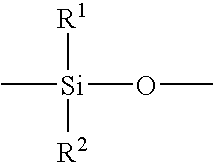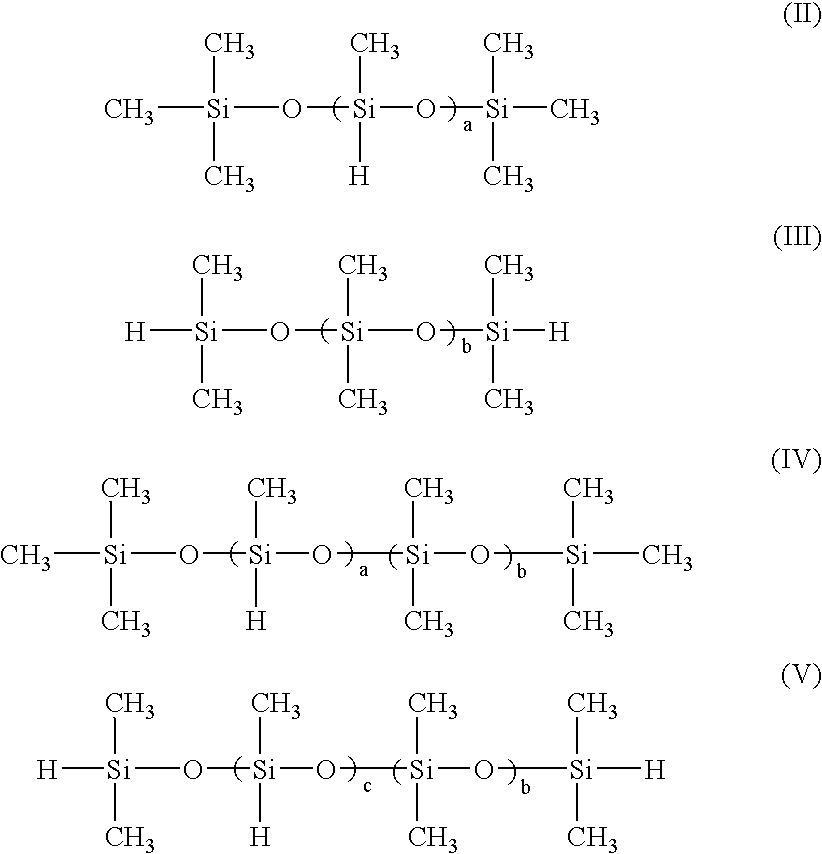Method for preparing master plate useful for making lithographic printing plate without need of dampening water
a technology of lithographic printing plate and master plate, which is applied in the field of manufacturing master plates, can solve the problems of increased laser light intensity, and increased paper damage, and achieve the effect of eliminating variation in performance and improving aging stability of coating solution
- Summary
- Abstract
- Description
- Claims
- Application Information
AI Technical Summary
Benefits of technology
Problems solved by technology
Method used
Image
Examples
examples
The present invention will now be described in more detail with reference to some exemplary examples. However, it is to be understood that the present invention is not limited to the exact examples described below.
examples 1-3
Comparative Examples 1-5
[Formation of a Heat-sensitive Layer 1]
On top of a 188 μm thick polyester film applied with the corona discharge treatment, “E-5101” (manufactured by Toyobo Co., Ltd.), a 200 Å thick titanium oxide thin film was formed as a heat-sensitive layer by the sputtering method.
[Formation of a Silicone Layer 1]
Coating solution comprising the components described below was prepared by a variety of methods as described in Table 1 and was allowed to stand for the time periods described in Table 1, and the thus prepared coating solution was applied onto the above-described heat-sensitive layer by using a spin coater so as to form a dry film having a thickness of 2 μm, and then dried by heating and drying at 130° C. for 1 minute to form a silicone rubber layer.
(a) Dimethylpolysiloxane having hydroxyl groups in 9 parts by weightboth ends (degree of polymerization 700)(b) Dibutyltin dioctanate0.2 parts by weight(c) Methyltriacetoxysilane0.5 parts by weightSolvent: Isober G ...
examples 4-9
Comparative Examples 6-13
[Formation of an Under Coat Layer]
On top of a 188 μm thick polyester film applied with the corona discharge treatment, “E-5101” (manufactured by Toyobo Co., Ltd.), a coating solution as defined below was applied by the wire bar coating method and dried at 180° C. for 30 seconds, thus formed an under coat layer having a dry film thickness of 0.2 μm.
AA-64 (polyester latex manufactured by Japan 5 parts by weightNSC Co., Ltd., solid content 30% by weight)SnO2 particle dispersions in water (17% by weight)15 parts by weightEmulgen 911 (polyoxyethylene alkylphenyl 2 parts by weightether manufactured by Kao Corp., 10% by weight)Distilled water80 parts by weight
[Formation of an Intermediate Layer]
A coating solution as defined below was applied over above-described under coat layer by the wire bar coating method and dried at 170° C. for 30 seconds, thus formed an intermediate layer having a dry film thickness of 0.05 μm.
AA-64 (polyester latex manufactured by 3.5 part...
PUM
| Property | Measurement | Unit |
|---|---|---|
| heat-sensitive | aaaaa | aaaaa |
| dissolving | aaaaa | aaaaa |
| stability | aaaaa | aaaaa |
Abstract
Description
Claims
Application Information
 Login to View More
Login to View More - R&D
- Intellectual Property
- Life Sciences
- Materials
- Tech Scout
- Unparalleled Data Quality
- Higher Quality Content
- 60% Fewer Hallucinations
Browse by: Latest US Patents, China's latest patents, Technical Efficacy Thesaurus, Application Domain, Technology Topic, Popular Technical Reports.
© 2025 PatSnap. All rights reserved.Legal|Privacy policy|Modern Slavery Act Transparency Statement|Sitemap|About US| Contact US: help@patsnap.com



